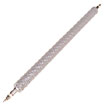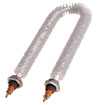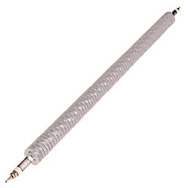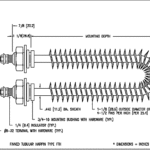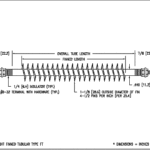Installation, Operation, and Maintenance Instructions
1.0 Handling
1.1 Handle with care to avoid damage to heater and components
1.2 Make sure heater is protected from contamination during storage. A dry environment if preferred.
2.0 Safety
2.1 WARNING: Make sure power supply is turned off before installation or service of electric heater to prevent electrical shock or damage to equipment.
2.2 WARNING: Circuit should have separate disconnect means which shall be capable of being locked in the open position and also in sight from the heater.
2.3 WARNING: Wiring must conform to the National Electric Code and Local Regulations and should be performed by a qualified electrician. Make sure wiring is of a suitable temperature rating, amperage rating, and the location.
2.4 WARNING: When servicing, handle with caution, the heater surface may be hot.
2.5 WARNING: Do not install heater into a medium or an environment that could result in an explosion, fire, or hazardous condition. Contact Vulcan regarding heaters that are specifically designed for hazardous locations.
3.0 Installation and Operation
3.1 Caution: Make sure the heater supply voltage is the same as the rated heater voltage.
3.2 Caution: Heater should be properly grounded to prevent electrical shock hazard
3.3 Caution: DO not support or suspend heater from termination or wiring
3.4 A common cause of heater failure is contamination of the the internal heater components through the termination end of the heater. Make sure the heater is protected from contamination in the final application.
3.5 Make sure heater termination is not exposed to water or other liquids. Make sure that no dripping from condensation on cold water pipes or other sources can fall on any exposed electrical wiring connections or components.
3.6. Terminations should be properly tightened and connected to hook-up wiring. A loose connection will result in overheating at the connection and could lead to premature failure. Where possible, use a wrench or pliers to prevent twisting of the terminals during installation.
3.7 It is good practice to avoid routing of thermocouples with power wiring. Use separate conduit. Thermocouples, thermostat capillary tubes, and wiring should be kept clear of heater terminals by distance or appropriate insulation.
3.8 Do not use Finned Tubular heaters with explosive gasses or air mixtures that may result in fire, explosion, or other hazardous conditions.
3.9 Threaded bushing mounting fittings are provided on some models for convenient mounting into duct, ovens, or other structures designed for air heating.
3.10 Units designed at higher watt densities should have air flow directed over finned portion of heater. Inadequate airflow over the heater will result in premature heater failure.
3.11 Make sure installation allows for free movement of air over the heater(s). Installations that include multiple heaters should be designed with a staggered heater configuration if possible.
3.12 It is recommended that the heater(s) be wired in such a way that a failure in fan motor providing air flow will automatically shut off heater.
3.13 Systems designed with air flow should incorporate an over temperature thermostat, flow, or pressure switch into the system to prevent heater and system damage in event of reduced, restricted, obstructed, or no air flow.
3.14 Do not exceed 110% of rated voltage. Higher voltages result in higher wattage output which could damage the heater, system, or medium heated.
4.0 Maintenance
4.1 For most applications, no heater maintenance is required.
4.2 Disconnect line switch prior to any testing or work on the heater
4.3 Check heater terminations after the initial 8 hours and tighten any loose terminal and jumper connections.
4.4 Recheck wiring periodically to ensure wiring has not become damaged, worn, or loose due to vibration or other application related conditions. Tighten, repair, or replace as needed.
5.0 Trouble Shooting
5.1 WARNING: Disconnect power supply to heater(s) before performing any trouble shooting procedures.
5.2 Check supply voltage to heater to ensure there is power.
5.3 Check wiring circuit- make sure heater is properly wired and all supporting controls, relays, contactors, and other circuit related switches are also properly wired and functional.
5.4 Check heater(s)- No heat due to a heater failure is generally due to an open heater circuit. Check heater resistance across both terminals or leads. A reading of infinity (no continuity) indicates an open circuit within the element and the heater must be replaced.
